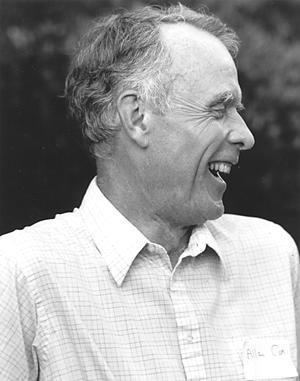Citizenship United States Role Geophysicist Nationality American | Known for geomagnetic reversals Doctoral advisor John Verhoogen Name Allan Cox | |
 | ||
Born December 17, 1926Santa Ana, California ( 1926-12-17 ) Alma mater University of California Berkeley (PhD, 1959) Books Plate Tectonics: How It Works, Your Inner CEO: Unleash the Executive Within, The CEO in You | ||
Residence United States of America | ||
Allan Verne Cox (December 17, 1926 – January 27, 1987) was an American geophysicist. His work on dating geomagnetic reversals, with Richard Doell and Brent Dalrymple, made a major contribution to the theory of plate tectonics. Allan Cox won numerous awards, including the prestigious Vetlesen Prize, and was the president of the American Geophysical Union. He was the author of two books on plate tectonics and over a hundred scientific papers. On January 27, 1987, Cox died in a bicycle accident.
Contents
Biography
Cox began studying chemistry at the University of California, Berkeley. However, after a single quarter he left school and spent three years in the United States Merchant Marine. He returned to Berkeley, but had so little interest in chemistry that his grades were too low to avoid being drafted into the United States Army. When he returned, he switched his major to geology. His research career in geology began in 1950 when he took a position as a field assistant to Clyde Wahrhaftig studying glaciation in the Alaska Range; the pair later had a long romantic relationship. For his graduate research at the University of California, Berkeley, Cox concentrated on rock magnetism with John Verhoogen as his supervisor. Verhoogen was one of the few geologists of the time who took the hypothesis of continental drift seriously. His stance made a deep impression on Cox.
After receiving his Ph.D. in 1959, Cox joined the United States Geological Survey in Menlo Park, California. There he collaborated with another geophysicist, Richard Doell, on rock magnetism. The two were particularly interested in geomagnetic reversals. At the time, very little was known about the timing of reversals. The rock specimens they collected were too young (a few millions of years) to date accurately until the potassium-argon dating method was developed. Cox and Doell arranged for the USGS to hire Brent Dalrymple, a graduate from Berkeley with expertise in this method. The three succeeded in creating the first geomagnetic polarity time scale. This work made possible the first test, by Frederick Vine and Drummond Matthews, of the seafloor spreading hypothesis.
Cox was hired as a professor at Stanford University in 1967. He became Dean of the School of Earth Sciences in 1979 and demonstrated a talent for administration that was widely acknowledged by his colleagues.
Cox died in a bicycle accident, colliding with a large redwood tree after falling off a cliff on Tunitas Creek road, in the mountains Northwest of Stanford University. The San Mateo County coroner concluded that Cox's death was a suicide. Cox was normally very safety conscious and had exceptionally not worn a helmet on that day. Cox's death came five days after he learned he was going to be charged with child molestation. Cox allegedly had molested the mentally disturbed son of one of his graduate students since the boy was fourteen years old. Cox had told the father of the molested child that he would kill himself if the allegations were reported to the police.
Honors
Cox was elected to the United States National Academy of Sciences, the American Academy of Arts and Sciences, and the American Philosophical Society. In 1969 the American Geophysical Union awarded him the John Adam Fleming medal for research in geomagnetism;. In 1970 he was awarded the prestigious Vetlesen Prize, along with G. Brent Dalrymple, Richard Doell and S. Keith Runcorn, for contributions to geology and geophysics. In 1976 the Geological Society of America awarded him the Arthur L. Day Medal for the application of physics and chemistry to the solution of geologic problems. He was the president of the American Geophysical Union from 1978 to 1980. In 1984 the United States National Academy of Sciences awarded him the Arthur L. Day Prize and Lectureship.
After his death, a number of memorials to him were created. The American Geophysical Union had the annual Allan Cox Lecture from 1998 to 2001; this lecture was replaced by the Edward Bullard lecture. The Geological Society of America (Geophysics Division) selects a student each year for the Allan V. Cox Student Research Award; and Stanford University awards the Allan Cox Medal for Faculty Excellence Fostering Undergraduate Research.
